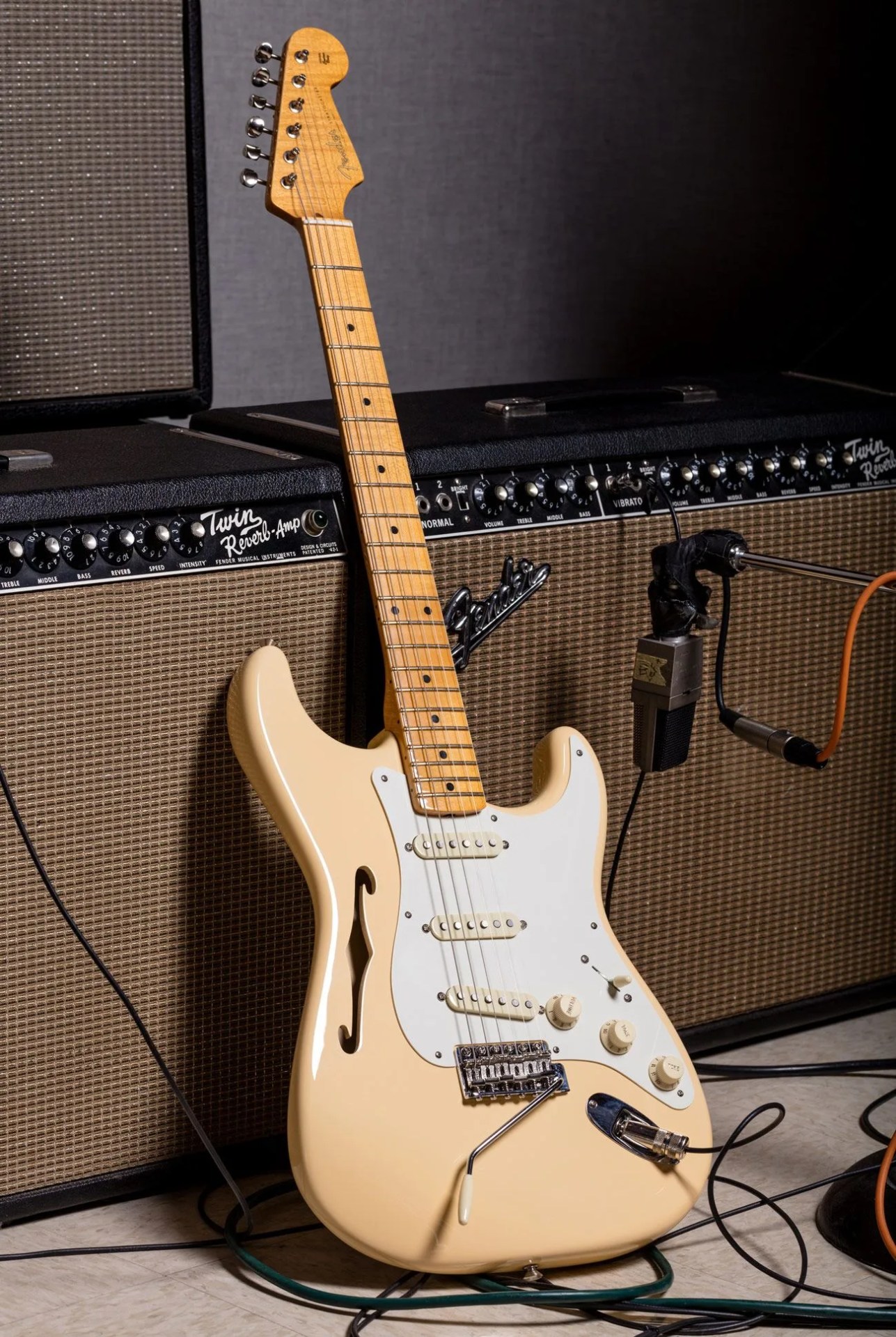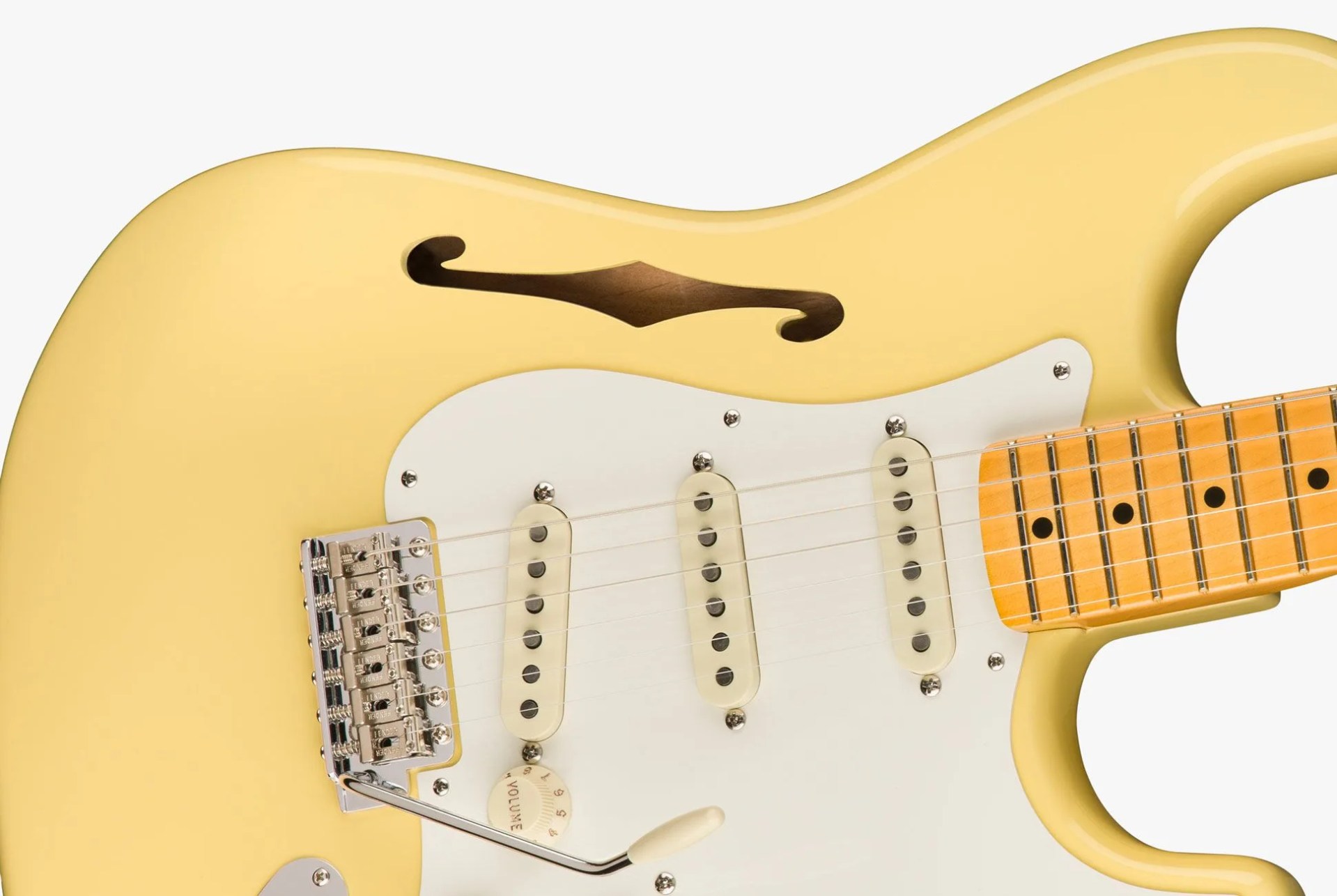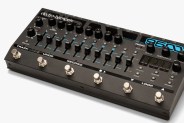Legendary guitarist Eric Johnson teamed up with Fender for his third signature model with the brand and it just so happens to be the first contoured semi-hollow body Stratocaster ever made. The instrument has the same features as Johnson’s solid body model — a nitrocellulose lacquer finish, a custom quartersawn ‘57 Soft V one-piece maple neck, three Eric Johnson single-coil pickups, a vintage-style synchronized tremolo bridge, and staggered tuning machines — but features a Thinline semi-hollow alder body, a first for the Arizona-based company. Though Fender has produced Thinline Telecasters since 1969, this is the first contoured Thinline Strat.
Known for virtuoso technique and highly musical performances, Johnson won the 1990 Grammy for Best Rock Instrumental Performance for “Cliffs of Dover” from the platinum album Ah Via Musicom . He has released 10 solo albums, performed on five live albums and made guest appearances on recordings with Chet Atkins, John McLaughlin, Adrian Legg and Mike Stern, among others. Johnson has an uncompromising approach to tone and is meticulous about both his live and recorded guitar sound. A longtime Fender Stratocaster player, Johnson has also extensively played a semi-hollow body Gibson ES-335.
On the tail end of his 2018 Ah Via Musicom tour — where he played the album in its entirety — Johnson is slated to record a solo acoustic album, another electric record and has a solo acoustic tour booked for July. We caught up with him on the road between concerts. While reflecting on the new instrument, Johnson shares the advantages of semi-hollow body guitars, the enduring qualities of vintage pedals and the benefits of playing acoustic music.
Q: Why a semi-hollow body Strat and why now, after so many years?
A: I’ve always just dug 335s, and I think the semi-hollow body adds a little resonation to the guitar. I like what it does — it’s really obvious to me on the 335. There have been so many Strats made with this and that, and I thought it was a unique departure from the Strat as compared to changing the pick-ups or the tremolo which have already been done by people, and a lot of them done quite well. So I just thought it would be something fresh and unique to bring to the Strat that hasn’t been really done that much yet. It’s something I’ve wanted to do for 20 years.
Q: You played a 335 a lot and have done incredible recordings with that, but you’re also a big Strat player. Does this offer the best of both worlds?
A: It’s still a Fender and it still sounds like a Fender, but it puts a little different slant on the tone of it — it breathes a little bit more. It seems to excite the wood to be more responsive than a solid body. So if you have a brand new guitar with brand new wood, it seems to excite it more like older wood would be. There seems to be a little more resonation in it.
Q: As a player, does the extra resonance give a different touch and a different response?
A: Yeah, it has a different feel when you’re playing it. When you play it through the amp, it has a little bit where it resonates back into the sound after you pick the note. So you do feel it. As you’re fretting it, you feel it as well because it’s got that inborn kind of thing where it’s pulling the note back into itself a little bit.



